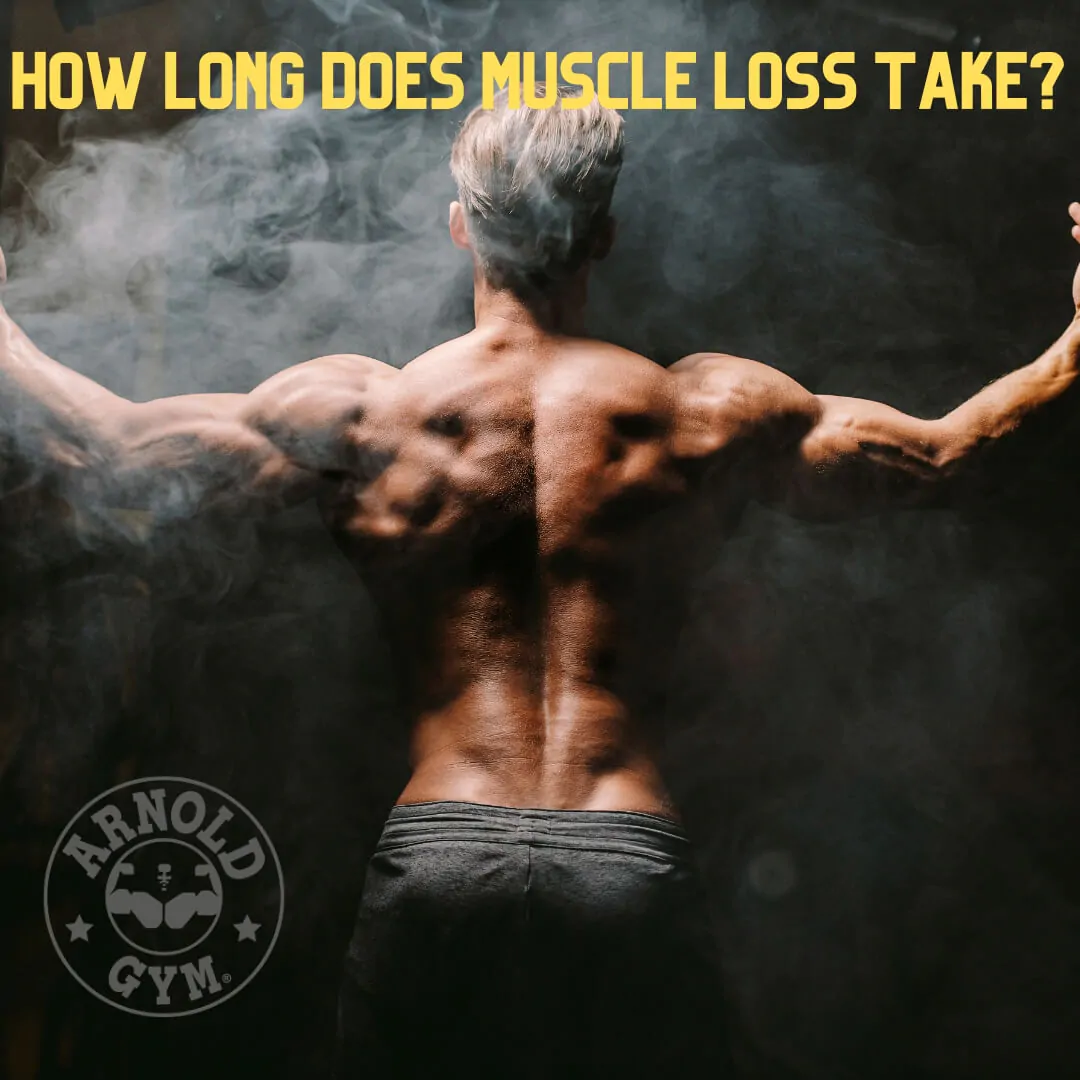Periods of inactivity raise a common concern among fitness enthusiasts: how fast do you lose muscle when training stops? Whether due to injury, time constraints, or motivation loss, even short breaks can feel risky. This article examines muscle loss after stopping workout routines—exploring the physiological mechanisms, research findings, and how small adjustments, including proper apparel and nutrition, can support long-term retention of strength.
How Fast Do You Lose Muscle After Stopping Workouts?
Muscle doesn’t just vanish overnight, but the decline can start sooner than you might expect. According to a 2013 study published in the Journal of Strength and Conditioning Research, trained athletes can begin losing noticeable muscle strength within three weeks of inactivity. However, beginners may experience performance drops even earlier—especially in endurance. (PubMed source)
When you stop training, your muscles go into what’s called “detraining” mode. Your body no longer receives the stimulus needed to maintain muscle fiber size and strength. During the first week, neural adaptations (your brain’s efficiency in sending signals to your muscles) begin to slow, but visible atrophy may still be minimal.
By the second or third week, muscle cross-sectional area (size) begins to decrease—particularly if your protein intake or overall nutrition declines. While muscle loss after stopping workout is gradual, it varies based on your age, training history, and daily physical activity levels.
That said, all is not lost. Muscle memory, which we’ll discuss later, allows you to regain muscle much faster once you return to training.
Does Muscle Loss Start Immediately?
The short answer is no—muscle loss doesn’t start immediately after you stop working out. If you take a few days off from training, your muscles might actually benefit from the rest, as recovery plays a crucial role in growth and repair. However, if your break extends beyond two to three weeks, your body begins to adapt to the lack of resistance training.
Initially, the first signs of change are neurological: your coordination, stability, and mind-muscle connection may decline slightly. These changes aren’t visible to the eye but can affect your performance in the gym.
True muscle atrophy—a reduction in muscle size—typically begins after 10 to 14 days of inactivity, especially if combined with a sedentary lifestyle. It’s important to distinguish between strength loss (which can stem from neural deactivation) and actual muscle atrophy (which is structural).
The process is also influenced by several key variables:
- Current fitness level and training history
- Age and biological sex
- Nutritional habits, especially caloric and protein intake
- Daily non-exercise activity (e.g., walking, manual work)
In other words, your body won’t punish you for taking a few days off, but prolonged breaks without any muscle stimulation can lead to measurable declines in both strength and mass.
So, how long does it take to lose muscle mass without exercise? Usually around 10–14 days to see the first signs, with more pronounced effects after three weeks.
Next, let’s explore how cardio conditioning compares to muscle strength when it comes to detraining.
Is it Harmful to Take a Break from Sports for 1 Month?
Taking a full month off from regular training can feel daunting, especially if you’ve made solid progress in your fitness or bodybuilding journey. But is it truly harmful?
A 2017 study published in the Journal of Applied Physiology observed athletes who completed a marathon and then significantly reduced their training. Initially running an average of 50 kilometers per week, the athletes scaled back to just 5 kilometers weekly. After four weeks, their cardiovascular fitness declined significantly, though not as severely as it would have with complete inactivity.
The study suggests that minimal physical activity, even in small volumes, helps preserve a baseline level of cardio fitness. For athletes dealing with injury recovery or time limitations, this means that a full stop isn’t necessary to maintain health benefits.
From a muscle retention standpoint, a month-long break without resistance training can lead to some loss in strength and volume, particularly if daily activity is low and protein intake decreases. However, this decline isn’t irreversible. Engaging in short, low-intensity workouts or bodyweight exercises a few times per week can mitigate losses.
In summary, while a 1-month break from workouts may reduce your cardio and muscle performance, it’s far from catastrophic. Maintaining some movement during your break, combined with smart nutrition, can preserve your gains and ease your return.
Reference: https://journals.physiology.org/doi/full/10.1152/japplphysiol.00911.2017

What Happens to Cardio and Strength During a Fitness Break?
Our bodies are naturally resilient when it comes to preserving muscular strength, but cardio fitness declines more rapidly during inactivity. If you stop training for a few weeks, your skeletal muscle strength might remain relatively stable, especially if you maintain an active lifestyle and a high-protein diet. Studies show that muscle mass can be maintained up to four weeks without resistance training, thanks to a phenomenon known as muscle memory.
However, cardiovascular conditioning tends to decline faster. Cardio endurance loss after stopping exercise can begin in as little as five to seven days. This is because the heart and lungs respond quickly to decreased stimulus. For beginners especially, cardio fitness can drop significantly within a four-week break, reducing overall aerobic capacity and stamina.
A 2017 study published in the Journal of Applied Physiology revealed that runners who reduced their weekly mileage from 50 km to 5 km over four weeks experienced a noticeable drop in cardiovascular performance. While strength can rebound quickly with retraining, cardio endurance may require more time to rebuild.
In essence, if you’re forced to take a break, your strength won’t vanish immediately—but it’s a good idea to incorporate low-intensity cardio or bodyweight workouts to keep your baseline fitness intact.
Reference: https://journals.physiology.org/doi/full/10.1152/japplphysiol.00911.2017
You may be interested to read What is Cardio and How to Do it?
How Age and Gender Influence Muscle Loss
Age and gender are critical factors that shape the rate and extent of muscle loss during periods of physical inactivity. As individuals age, the body’s ability to preserve and regenerate skeletal muscle mass declines due to hormonal changes and reduced satellite cell activity. Older adults, especially those over 50, may experience more rapid loss of muscle strength and endurance after just a few weeks without resistance training.
A large-scale study involving over 2,000 participants divided into young and older age groups found that both cohorts underwent the same training and detraining protocols. The outcome? The older group exhibited a decline in muscle strength that was twice as fast as that of the younger participants.
Interestingly, gender did not significantly affect the rate of muscle loss within the same age groups. However, researchers observed that women—particularly in the older cohort—were more likely to return to baseline levels of strength and mass after detraining, indicating a greater relative decline.
These findings underscore the importance of consistent training and age-appropriate resistance workouts, especially for older adults seeking to mitigate muscle atrophy. Maintaining an active lifestyle, prioritizing adequate protein intake, and engaging in regular resistance training can significantly slow the age-related decline in muscle mass.
How to Prevent Muscle Loss During Long Breaks
Preventing muscle loss during extended periods of inactivity is a concern shared by athletes, bodybuilders, and casual gym-goers alike. Fortunately, several science-backed strategies can help preserve muscle mass even when your regular workout routine is interrupted.
First, maintain a protein-rich diet. Adequate protein intake is essential for muscle maintenance, especially during times of reduced physical activity. Aim for at least 1.6 grams of protein per kilogram of body weight daily, focusing on complete protein sources such as eggs, dairy, poultry, and legumes.
Second, engage in minimal effective volume (MEV) training. Even low-volume resistance exercises—such as bodyweight squats, push-ups, or resistance band workouts—can provide enough stimulus to retain muscle fibers. A few short sessions per week can make a significant difference in preventing muscle atrophy.
Third, prioritize sleep and stress management. Hormonal imbalances caused by poor sleep or chronic stress can accelerate muscle breakdown. Ensuring you get 7–9 hours of quality sleep and incorporating relaxation techniques like mindfulness or stretching can help your body maintain its anabolic state.
Lastly, take advantage of muscle memory. If a complete break is unavoidable, know that your body will retain neuromuscular adaptations and cellular structures that facilitate quicker regrowth once training resumes.
In short, you can prevent muscle loss during long breaks by integrating nutrition, low-intensity workouts, and proper recovery techniques into your lifestyle. For many, combining this with functional and breathable bodybuilding wear or men’s workout tops can enhance motivation and comfort when returning to training.
Before you panic about muscle loss, remember that progress works both ways. Wondering what you can achieve in just 30 days?
Explore: How Much Muscle Can You Build in a Month?
Conclusion: How to Handle Muscle Loss After Stopping Workout
Taking a break from exercise—whether due to injury, work, or personal commitments—does not mean losing all your hard-earned gains. Yes, muscle loss after stopping workout can begin within two to three weeks, and factors like age, gender, nutrition, and baseline activity levels play significant roles. However, the process is gradual and often reversible thanks to muscle memory and smart lifestyle adjustments.
You can mitigate loss with basic steps like maintaining protein intake, incorporating light resistance training, and staying active throughout your day. Tools like performance-focused men’s workout tops and functional bodybuilding wear can help you stay comfortable and confident, even during light training sessions.
Whether you’re returning from a short break or planning ahead for a longer one, knowing how your body reacts—and how to work with it—is key.
Ready to restart your journey? Check out our full range of Arnold Gym men’s fitness apparel to stay motivated and stylish.


